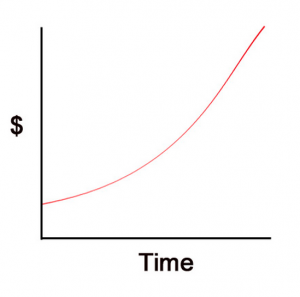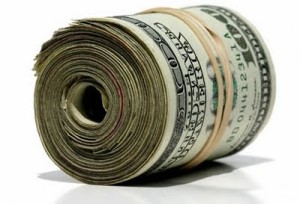Poker on the internet is in very many ways similar to live poker. It’s still poker after all and the rules, probabilities and everything else that really matters is the same. However, poker on the internet creates a new method of playing that is just not practical in live play…. playing more than one table.
There is often a debate amongst players regarding this new variable. Is it sensible to play more than one table? What is the sensible number of tables to play? For serious students of the game this is an important question. I know that I feel a little “jealous” when I hear of people playing 16 tables at once for good profit.
The main argument for single tabling is that you can’t concentrate on the other players, as well as you should, when you play more than one table. Playing multiple tables will stunt your “poker growth”. This argument increases in strength as we move up limits. I think it is obvious that the reason for that is that as you move up limits the other players become better. Better poker players are more observant. So whilst playing “ABC poker” at lower limits is a powerful and profitable approach, it becomes costly at higher limits. At higher limits you need to play the other players as well as your cards and you certainly cannot be predictable.
However, the arguments for multi tabling are also quite compelling. I was never a winner at single table play. I just did not have the discipline that is required to win at limit hold’em and so often made errors knowingly out of boredom and frustration. This leak in my game still exists but I can control it much better when I multi-table. For now I make my living playing mostly 4 tables of 3/6 online. I have the software tools that give me real time statistics on my opponents without which I wouldn’t be able to do what I do.
To some extent the decision on whether to multi-table or not (and how many tables) depends on each players abilities, his/her poker aims and the computer equipment available.
I am glad that there seems to be a limiting factor in regards to money making opportunities in that the choice for low level pros (like myself) is usually to move up limits or increase tables, presuming that more income is desired and the status quo has become relatively easy. Frequently moving up limits will require a reduction in the number of tables being played.
So how does one make the decision between being a Multitabler or a High Roller?
In many respects the decision has a lot to do with personal choice and the matching of playing style with personality. But let’s consider some of the math involved.
I am again assuming that poker earn rate is normally distributed and will be using some of the properties of normal distributions that I have discussed in my previous two articles.
Let’s have a look at two hypothetical choices we could have.
-
We can choose to be a Multitabler who can play 5 tables of 3/6 at an earn rate of 2 big bets per 100 hands
-
We can choose to be a High Roller who plays one table of 30/60 at an earn rate of 1 big bet per 100 hands
Hopefully it appears obvious that the expected income over any time period will be identical whichever choice is taken.
We have another statistic to consider besides expected earn rate – standard deviation – swing.
So assuming that
-
the standard deviation for the Multitabler is 19 bb/100
-
and 16 for the High Roller.
and that 75 hands are played per hour per table we can produce the following:
| Multitabler | High Roller | ||||||||
| Time in Hours | Hands | Expected Earn (In Big Bets) |
SD (In Big Bets) | Time in Hours | Hands | Expected Earn (In Big Bets) |
SD (In Big Bets) | ||
| 1 | 375 | 8 | 37 | 1 | 75 | 0.75 | 14 | ||
| 1 Session | 2 | 750 | 15 | 52 | 1 Session | 2 | 150 | 1.5 | 20 |
| 1 Day | 6 | 2,250 | 45 | 90 | 1 Day | 6 | 450 | 4.5 | 34 |
| 1 Week | 36 | 13,500 | 270 | 221 | 1 Week | 36 | 2700 | 27 | 83 |
| 1 Month | 144 | 54,000 | 1,080 | 442 | 1 Month | 144 | 10,800 | 108 | 166 |
| 1 Year | 1728 | 648,000 | 12,960 | 1,529 | 1 Year | 1728 | 129,600 | 1,296 | 576 |
Now looking at a table like this might be very interesting but I tend to get a bit lost in all the numbers and forget what I am supposed to be looking for. We could analyse swing by looking at the likelihood of extreme results like I did in my last article.
There is, however, another interesting way to look at these numbers. It’s what statisticians call confidence intervals.
Normal distributions have the following property:
-
we expect the observed random variable
-
to lie between the [mean – 1.96 × standard deviation] × and [mean +1.96 standard deviation]
-
95% of the time.
For example a normal distributions with mean 0 and sd 1 (the standard normal distribution) will produce an observed result between –1.96 and 1.96 with 95% certainty.
Another example: we expect our High Roller above to earn between -$1,821.60 and $1,941.60, over the next 100 hands, 95% of the time. The other 5% of the time he will have results beyond these extreme limits.
(If you have trouble seeing where I get these numbers from, please ask me over in the forum and I will be happy to help).
So for a 95% confidence interval the critical value is 1.96.
This is a well known number but you can easily calculate it for yourself in excel using the “goal seek” function. (again ask if you have difficulty doing this).
The critical value for a 99% confidence interval is 2.56, and
the critical value for a 90% confidence interval is 1.65.
So now we can use the table above of means and standard deviations to compare the ranges of earn rates at different time intervals.
95% confidence intervals:
|
Multitabler |
High Roller |
Expected Earn for both |
|||
|
$ Lower |
$ Upper |
$ Lower |
$ Upper |
||
|
1 Hour |
-388 |
478 |
-1,585 |
1,675 |
45 |
|
1 Session |
-522 |
702 |
-2,214 |
2,394 |
90 |
|
1 Day |
-790 |
1,330 |
-3,721 |
4,261 |
270 |
|
1 Week |
-976 |
4,216 |
-8,157 |
11,397 |
1,620 |
|
1 Month |
1,288 |
11,672 |
-13,074 |
26,034 |
6,480 |
|
1 Year |
59,773 |
95,747 |
10,022 |
145,498 |
77,760 |
Why does the High Roller have more variable results when he has a lower standard deviation? The answer is simple and is the crux to all of this… it’s because the multitabler plays far more hands. Random variables are not influenced by the passage of actual time. The number of hands played becomes crucial here. The multitabler gets to the “long term” much quicker and gallops ahead getting less and less variable outcomes compared to the High Roller.
For me the fact that monthly income as a High Roller will frequently and expectedly be negative is quite scary. Then again if I wanted a job with low variability in my earn rate I would still be commuting into the city every day to crunch numbers for pension schemes.
So who is the most confident then? The Multitabler or the High Roller? It seems the answer depends on how you define “most confident”. I hope you make this and all your poker decisions with confidence.
(I show some more results below for your viewing pleasure)
90% confidence intervals:
|
|
Multitabler |
High Roller |
Expected Earn for both |
||
|
$ Lower |
$ Upper |
$ Lower |
$ Upper |
||
|
1 Hour |
-319 |
409 |
-1,327 |
1,417 |
45 |
|
1 Session |
-425 |
605 |
-1,850 |
2,030 |
90 |
|
1 Day |
-622 |
1,162 |
-3,090 |
3,630 |
270 |
|
1 Week |
-566 |
3,806 |
-6,611 |
9,851 |
1,620 |
|
1 Month |
2,109 |
10,851 |
-9,981 |
22,941 |
6,480 |
|
1 Year |
62,618 |
92,902 |
20,736 |
134,784 |
77,760 |
99% confidence intervals:
|
Multitabler |
High Roller |
Expected Earn for both |
|||
|
$ Lower |
$ Upper |
$ Lower |
$ Upper |
||
|
1 Hour |
-520 |
610 |
-2,083 |
2,173 |
45 |
|
1 Session |
-709 |
889 |
-2,920 |
3,100 |
90 |
|
1 Day |
-1,114 |
1,654 |
-4,943 |
5,483 |
270 |
|
1 Week |
-1,771 |
5,011 |
-11,150 |
14,390 |
1,620 |
|
1 Month |
-302 |
13,262 |
-19,060 |
32,020 |
6,480 |
|
1 Year |
54,267 |
101,253 |
-10,714 |
166,234 |
77,760 |
80% confidence intervals:
|
|
Multitabler |
High Roller |
Expected Earn for both |
||
|
$ Lower |
$ Upper |
$ Lower |
$ Upper |
||
|
1 Hour |
-238 |
328 |
-1,019 |
1,109 |
45 |
|
1 Session |
-310 |
490 |
-1,415 |
1,595 |
90 |
|
1 Day |
-422 |
962 |
-2,337 |
2,877 |
270 |
|
1 Week |
-75 |
3,315 |
-4,765 |
8,005 |
1,620 |
|
1 Month |
3,089 |
9,871 |
-6,290 |
19,250 |
6,480 |
|
1 Year |
66,014 |
89,506 |
33,523 |
121,997 |
77,760 |
Submit your review | |




